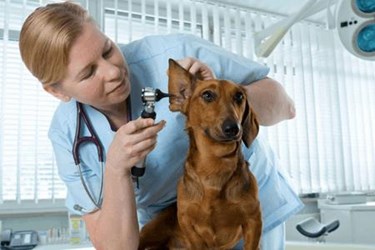Clinical Challenges In Pet Meds Mirror Those In Human Studies

By Ed Miseta, Chief Editor, Clinical Leader

“Over the last couple of decades, the role of pets in our lives has changed.” That is one of the first lines you will see if you visit the website for KindredBio, a company developing medicines for pets. Animals are an integral part of the lives of their owners, and are now considered to be members of the family.
That change has also created a critical need in the world of medicines. Owners now expect to have the same treatments available for their four-legged family members as are available for humans. And they are willing to pay for effective treatments. At the same time, there are few companies providing these medicines.
The KindredBio’s mission is to bring family pets the same kind of innovative, breakthrough medicines that human family members enjoy. “Our core strategy is to leverage the billions of dollars that have been invested by companies in human pharmaceuticals by modifying, improving, and repurposing them for animals,” says Chin, CEO for KindredBio. “These pre-existing drugs have already been proven safe and effective in humans. For example, we are developing a canine version of Humira, one of the most successful human biologics on the market.”
Chin and company co-founder Denise Bevers decided to enter the veterinary medicines business because both had a background in pharma and a shared love for animals. They also recognized that many drugs developed for humans could be used to treat animals with similar conditions. “We wanted to find cures for pets and also knew the field of veterinary medicine was growing,” says Chin. “The industry seems to be about 20 years behind where the human medicines business is today.”
In this Q&A, Chin discusses the clinical trial process for pet medications, the growing opportunity for pharma, and how he stays on top of the rapidly growing field as well as a company that is expanding every year.
Ed Miseta: Tell me about KindredBio and its business strategy.
 Richard Chin: I believe the pet medicines market has been largely ignored for years. There are medicines available to treat conditions in humans but not animals, even though the diseases can be quite similar. We are attempting to take medicines already approved for use in humans and make them available for pets. We believe that instead of the typical 5 percent to 10 percent success rate seen with new and chemical entities in traditional drug development, we can achieve a 70 percent success rate. We also believe the pet medicines industry is poised to replicate the growth and success we have seen in the pharma industry over the last 25 years.
Richard Chin: I believe the pet medicines market has been largely ignored for years. There are medicines available to treat conditions in humans but not animals, even though the diseases can be quite similar. We are attempting to take medicines already approved for use in humans and make them available for pets. We believe that instead of the typical 5 percent to 10 percent success rate seen with new and chemical entities in traditional drug development, we can achieve a 70 percent success rate. We also believe the pet medicines industry is poised to replicate the growth and success we have seen in the pharma industry over the last 25 years.
Miseta: Why is this industry growing so quickly?
Chin: It is due to the change in relationship that owners have developed with their pet. Today, pet owners are investing a lot more in the health of their pets. That makes this an attractive field. Pet owners now spend over $700 million every year just on Valentine’s Day presents for their animals. We now spend $1.5 billion a year just on ACL repair surgery for dogs. That love of pets, and the willingness to spend large amounts of money on them, makes animal wellness a growing field in the world of drug development. Whether you look at pet snacks, gifts, medicines or diagnostics, all are growing exponentially.
Miseta: KindredBio has also been growing quickly. Has that growth presented challenges?
Chin: When growing quickly, even if you can attract talented people, managing the growth is always a challenge. In those situations, you have to update the company culture and processes as you grow. When you’re growing, you quickly discover that you can’t run a 20-person company like you did a 5-person company. You can’t run a 50-person company like you did a 20-person company. We try to stay ahead of the curve by anticipating the growth and making sure we have the needed processes in place to support our team.
Miseta: Have your past experiences in pharma helped in that regard?
Chin: Yes, definitely. And it’s not just my own experience. Our senior managers have also spent time in drug discovery companies of different sizes. I think the insights we gained in those prior positions have given us a sense of what methods and processes are appropriate for companies of different sizes.
Miseta: Have you had any difficulty attracting talent to keep up with your growth?
Chin: We are located near San Francisco, which is a bio hub. That has helped. Recruiting the most qualified and experienced talent is never easy. Fortunately, we have found there are a lot of people who prefer working for a smaller company rather than a larger one. That helps us since we’re a small company in a new and growing field. We are also a dynamic and fast moving company with a healthy pipeline. We have therefore had great luck in hiring talented individuals across the board. We have also had almost no turnover. If someone wants to work in the veterinary medicine space, and wants to be with a small company, there are few other companies they can go to. That has been a great advantage for us.
Miseta: Where do veterinary medicine CRAs generally come from?
Chin: Many of them come from the larger veterinary pharma companies, which tend to be subsidiaries of Big Pharma companies. They can be people who studied animal health in college or even veterinary technicians who have worked in clinics. We have a mix of animal health professionals and folks with experience at human pharma companies. Thus far, our hires have been excellent. If there is knowledge they are lacking, we will also provide them with on-the-job training.
Miseta: Is the clinical trial process different with animals than it is with humans?
Chin: They are surprisingly similar. But, pet trials are smaller, shorter, and far less costly. Our medicines are mostly regulated by the FDA and the trials are conducted under formal protocols with traditional features like inclusion/exclusion criteria. It should also come as no surprise that placebos are used in veterinary medicine trials just as they are in human trials. While pets cannot be subject to placebo effect, their owners and veterinarians certainly can. Sometimes a drug’s effectiveness will be based a qualitative assessment such as a pain score, where placebo effects do occur.
Miseta: Increasingly, pharma companies and payers are paying close attention to the cost of medicines. Is the market cost of pet medicines a concern for you during the development process?
Chin: Yes. In fact, we start to look at cost before we even begin a clinical program. We try to determine the magnitude of benefit the drug will provide, and what a pet owner will be willing to pay for it. With pets now being family members, we believe owners will be willing to pay for effective medicines once they understand the benefits they will provide to animals. Owners may not be willing to pay for a drug with a marginal benefit, but will pay for one that can demonstrate a substantial clinical benefit.
If you think about it, in the veterinary world we have more of a free market. The demand for a drug is based on a true cost/benefit ratio. This is not the case in the human drug world where the payer is generally not the person receiving the benefit. Our patients and caregivers do not have Blue Cross/Blue Shield. They have MasterCard, Visa, and American Express. That is something we always keep in mind and is the reason why making drugs affordable is very important to us.
Miseta: Clinical outsourcing has become the norm in human drug development. Is that the preferred model in pet medicines as well?
Chin: This is one area where veterinary medicine is somewhat different. All of our clinical work is conducted in-house, working with animal clinics that have access to the pets requiring treatment. As a result, we are able to do the work faster and at a lower cost.
Miseta: How are you able to be more cost-effective without a CRO?
Chin: One of the primary reasons for outsourcing is to avoid the downtime you have with full-time staff between studies. You hire staff for a large trial and then may not have work for them to perform after the study ends. Thankfully, we have a very broad pipeline which allows us to keep our CRAs and other development personnel busy at all times. We are generally running several Phase 2 or Phase 3 studies at any given time. The studies are shorter and smaller, so we do not have the significant peaks and valleys that you experience in large human trials. In addition, our employees are very talented and they are extremely dedicated because they are working on exciting projects that they have 100 percent ownership over.
That said, I think there will be tremendous growth in pet medicine CROs in the future. Today, most animal health CROs have fewer than 40 employees. I see a day when larger CROs specializing in animal studies will provide turnkey solutions for animal medicine companies.
Twenty years ago even the largest human CROs had around 300 employees. Since then the growth in outsourcing has exploded. The animal medicine industry is a couple decades behind, but it will see that same explosive growth. I believe we will one day see a veterinary CRO the size of Quintiles operating in the veterinary space. We are just not there yet. In general, everything we have seen happen on the human side, including outsourcing, will also happen on the veterinary side.
